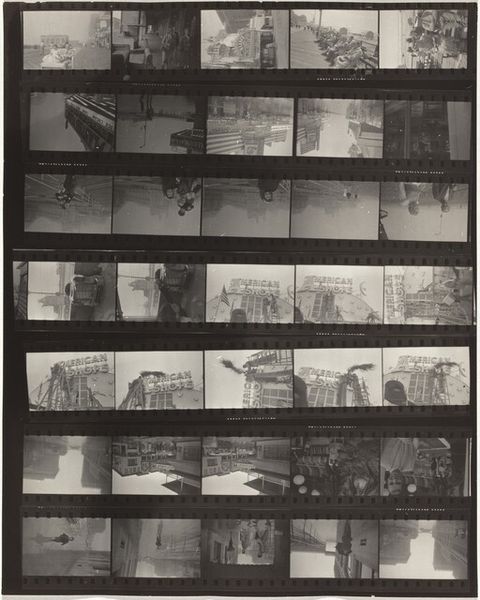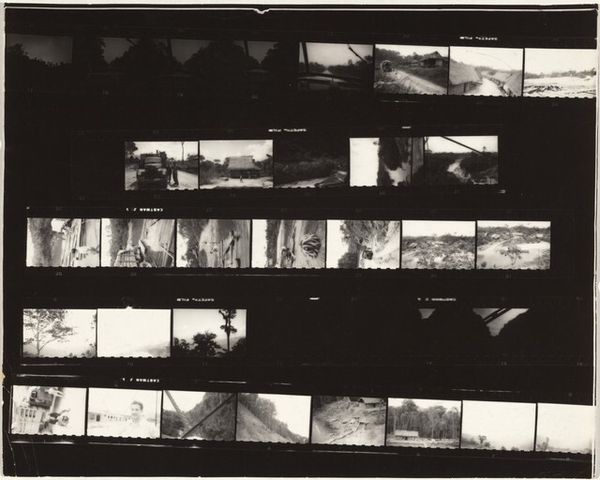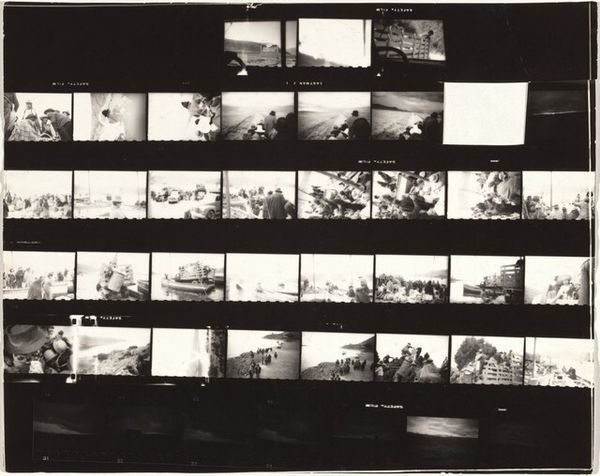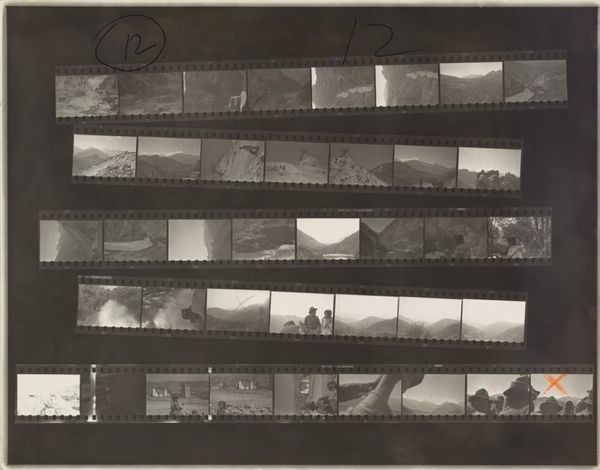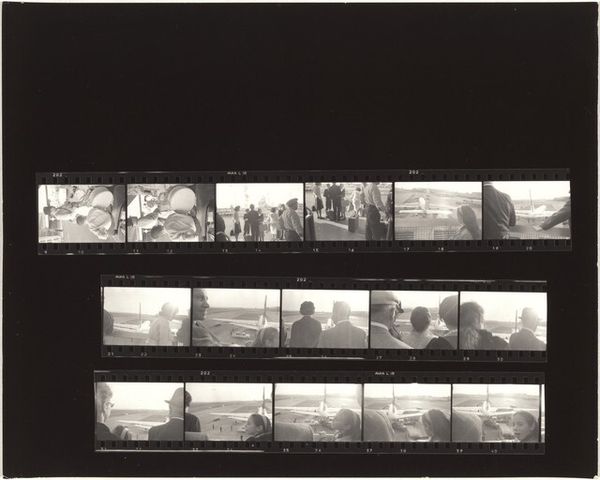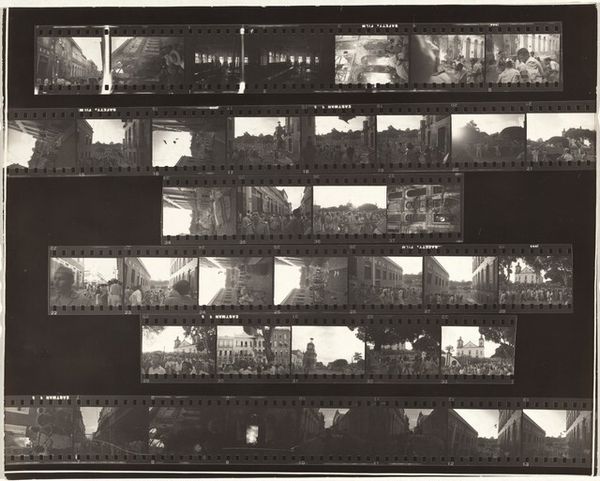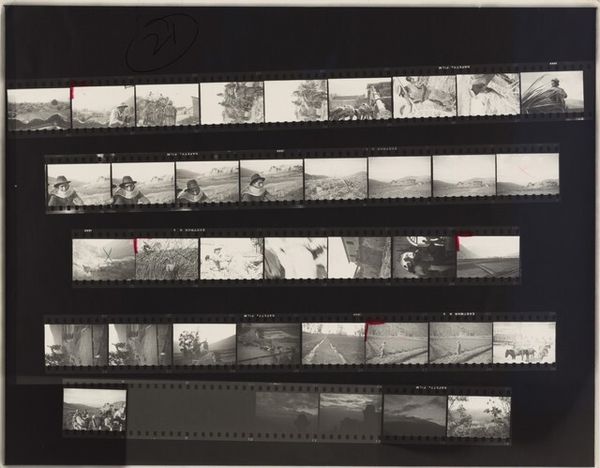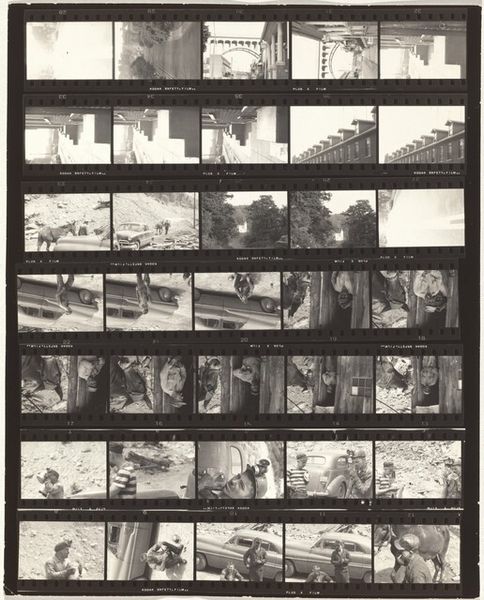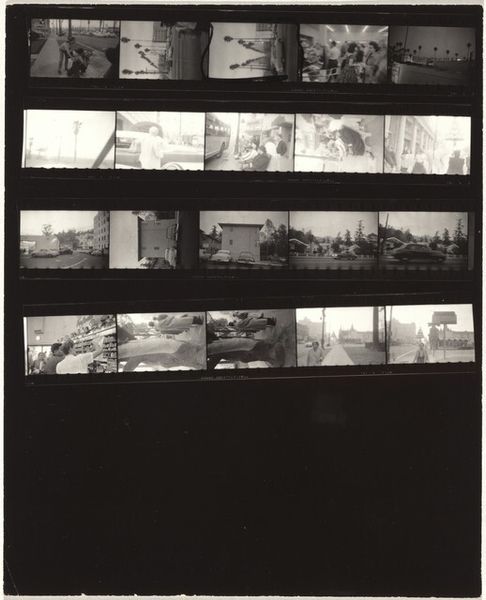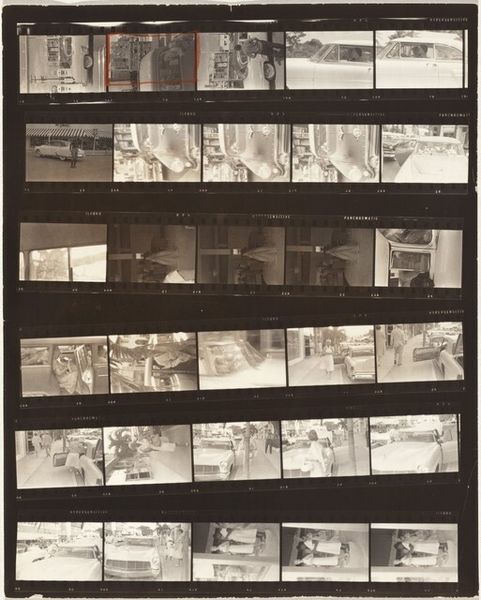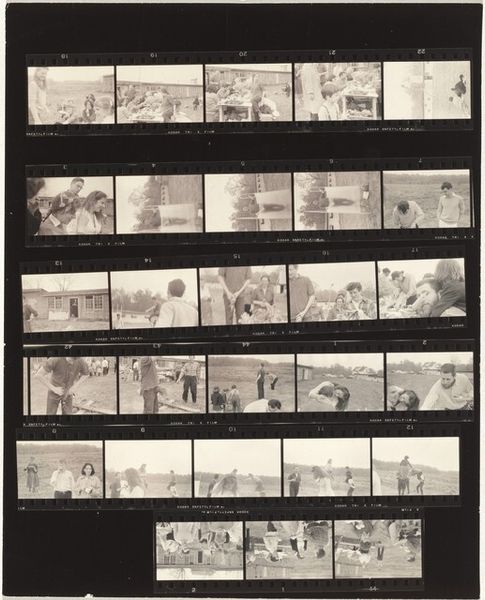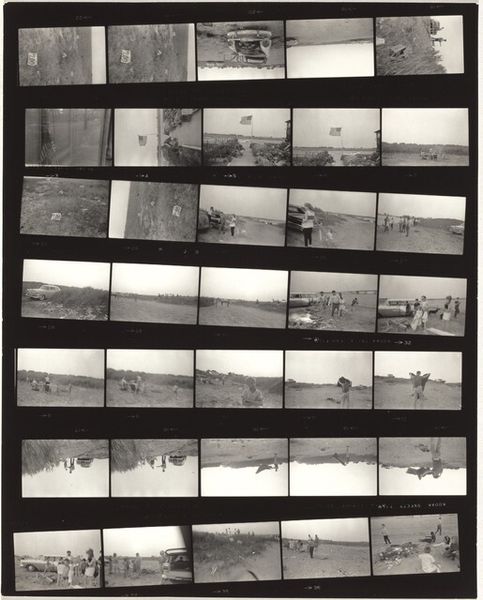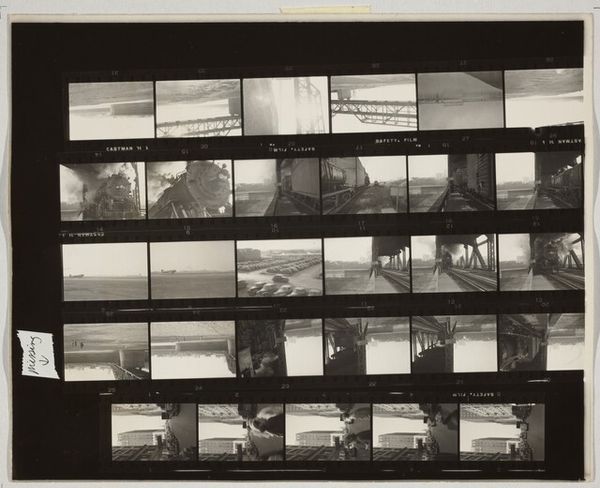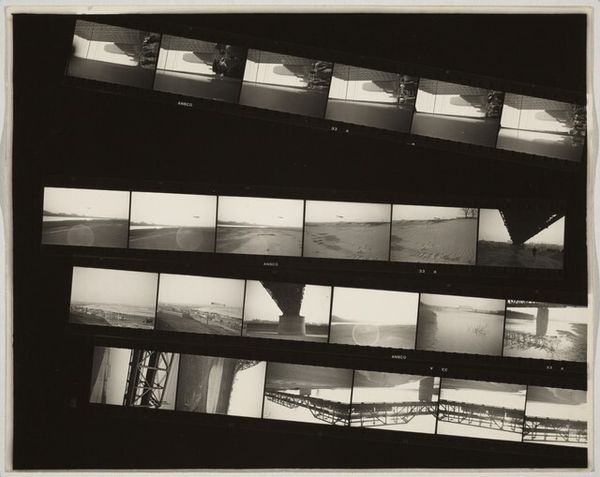
Dimensions: sheet: 21.1 x 27.8 cm (8 5/16 x 10 15/16 in.)
Copyright: National Gallery of Art: CC0 1.0
Editor: So, here we have Robert Frank’s “Family no number” from 1965, a gelatin-silver print that looks like a filmstrip. The high contrast and the somewhat damaged appearance create a really raw, almost chaotic feeling. What strikes you when you look at this piece? Curator: Ah, Robert Frank. Looking at this makes me think of rummaging through an old shoebox of family photos found in an attic—torn edges, light leaks, and all. It’s beautifully imperfect. He gives us intimacy not in spite of, but because of the gritty textures. Makes you wonder, doesn't it, about the narratives he stitches together from these fragmented moments? It’s less about a perfectly composed shot and more about capturing a feeling, wouldn't you agree? Editor: Definitely, I can feel the fragmented and deeply personal aspect! Did Frank intend for it to look so…raw? Or was that a consequence of his process? Curator: I suspect it’s both! Frank embraced the accidental. The graininess, the scratches—they’re all part of his visual language. It's a counterpoint to the glossy, hyper-perfect imagery that was becoming so prevalent in commercial photography. It feels almost like a deliberate act of rebellion. It also raises interesting questions about memory and the stories we tell ourselves about our pasts – aren’t they often fragmented and imperfect? Editor: That’s a great point. It feels almost more authentic because it's not striving for perfection. It's embracing the flaws. This photo now gives me another lens when reviewing street photography. Curator: Exactly. Imperfection is a form of truth.
Comments
No comments
Be the first to comment and join the conversation on the ultimate creative platform.
